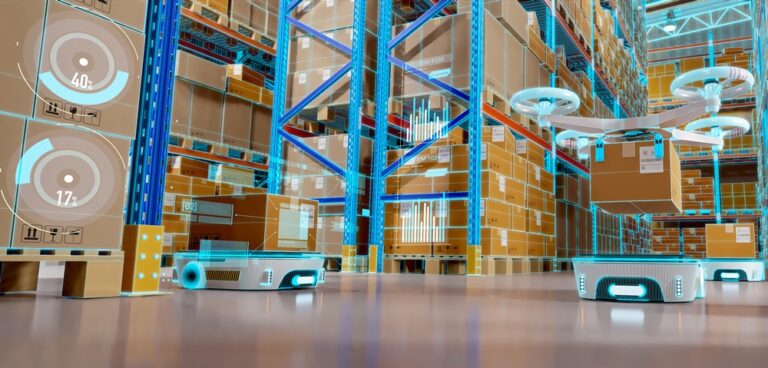A smooth-running supply chain starts in an efficient warehouse. From inventory distribution to sorting, warehouses play a strategic role. That is why it is essential to avoid bottlenecks and ensure the warehouse is running efficiently.
Jean-Baptiste Clouard, CEO at Flowlity, an innovative AI-based supply chain planning and optimisation solution, shares how to effectively use AI to optimise warehouse processes, as well as highlighting the benefits of implementing these processes for businesses.
Forecasting
Every year, billions of pounds are lost as a result of shortages or overstocks at the manufacturing and distribution stage. Maintaining an optimal stock level is essential to avoiding shortages and costly overstocks, but finding this balance is a challenge.
AI-based self-learning solutions can set minimum and maximum boundaries that help to avoid overstocking and shortages. Instead of aiming for a ‘correct’ amount of stock at all times, the algorithms continuously recalculate these minimum and maximum levels based on consumption history and sales patterns to ensure recommended stock levels stay up to date. Real-time alerts can be set to flag potential overstocks or shortages in advance so that action can be taken to resolve this, before it becomes a larger issue.
Using a self-learning system also reduces the potential for human error in calculating these min / max levels and takes the manual work out of the process – removing the need for someone to crunch the numbers. This leads to efficient inventory planning that ensures a more accurate flow of items in and out of a warehouse.
Information visibility
AI can be used to process large amounts of information in a short time, leading to data being more easily condensed and accessible. This data can then be entered into a system that connects all parties in the supply chain, allowing the same information to be shared from end to end. The current supply chain is based on each party acting independently, but using software to centralise information means that all users have visibility on orders. This encourages a unified approach to inventory management.
By having visibility on processes and orders further down the supply chain, warehouses can become more reactive to disruption and can adjust their inventories based on real time information from how much stock is being used down the line. Storing data and information in a centralised system also eliminates the need to provide regular updates to the rest of the supply chain, leading to greater responsiveness to risk and enhanced contingency planning.
Order management
Having full visibility on orders coming in and out of a warehouse is crucial to ensuring efficiency and accuracy in fulfilling these orders. AI software can be used to automate these orders, putting them in one portal that makes it easier to manage incoming supplier shipments and outgoing customer shipments, and to verify that operational constraints such as minimum order quantity and full truckload are met.
The order process can be streamlined using automation, leading to greater efficiency in warehouse planning as there is up-to-date order information at hand – which is further continually updated using AI and reduces the need for updating manually.
An efficient warehouse is integral to the supply chain, supporting a smooth product journey from component parts all the way to the customer, so it’s essential to ensure processes are in place to aid efficiency and lessen volatility.
Using an AI system can solve issues in the warehouse quickly and accurately while simplifying processes and strengthening communication. Algorithms can automate and coordinate orders, centralise information and accurately forecast to ensure efficient stock levels – all processes that traditionally would be carried out manually. The use of AI and optimisation leads to increased accuracy and speed in orders, improving cycle times and the customer experience.
For more information about Flowlity’s AI-based stock optimisation and forecasting solution, visit: https://flowlity.com

